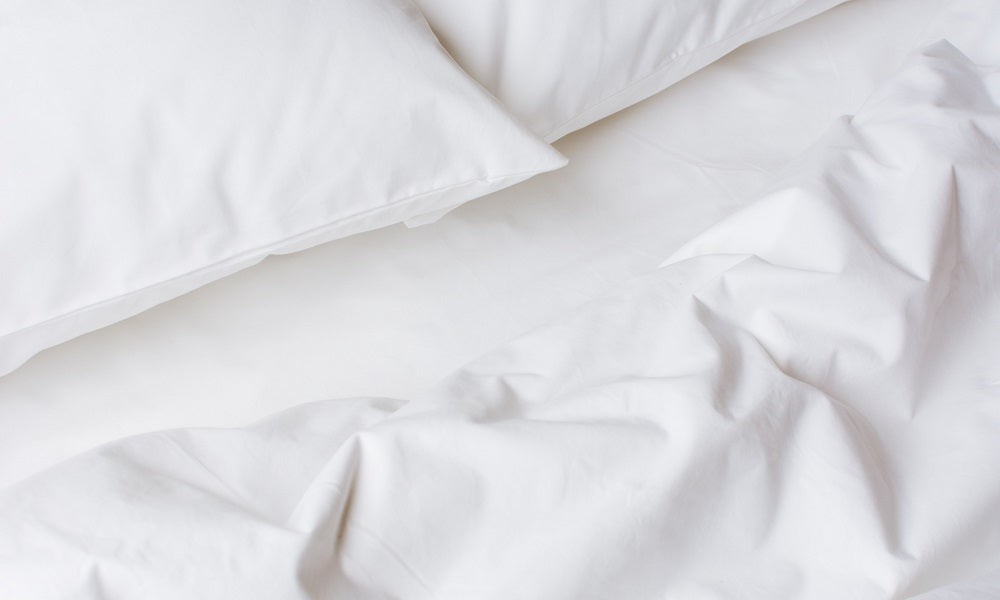Choosing the right bedding can significantly impact your sleep quality. Among the many options available, cotton sheets remain a popular choice for their comfort and breathability. Within the realm of cotton, you’ll often encounter terms like “percale” and “sateen,” referring to the weave of the fabric. Understanding these weaves is crucial in selecting sheets that meet your specific needs. This guide delves into percale cotton, exploring its characteristics, benefits, and drawbacks to help you make an informed decision.
Percale refers to a specific type of weave used in cotton fabrics. It’s a plain or basket weave, characterized by a one-thread-over, one-thread-under pattern. This weaving method has been used for centuries and is known for producing strong, durable fabrics with a matte finish and a crisp feel. To qualify as percale, the fabric must have a thread count of 180 or higher per square inch.
Percale is a classic choice, often found in high-end hotels and commonly used in children’s bedding. Its lightweight and strong weave makes it exceptionally breathable, resulting in cool and crisp sheets perfect for year-round use, especially during warmer months and for hot sleepers.
The Advantages of Percale Cotton:
- Strength and Softness: Percale strikes a balance between durability and comfort, offering a fabric that’s both strong and smooth to the touch.
- Breathability: Its open weave allows for excellent airflow, making it a great choice for warm sleepers or during the summer months.
- Cool and Crisp Feel: Percale sheets have a cool, crisp feel that many find refreshing and comfortable.
- Durability: The tight weave of percale makes it resistant to wear and tear, ensuring your sheets last longer.
- Pill Resistance: Percale is less likely to pill compared to other weaves, maintaining its smooth surface over time.
- Easy Care: Percale sheets are easy to care for, typically machine washable and dryable.
- Gets Softer Over Time: With each wash, percale cotton becomes softer and more comfortable.
The Potential Drawbacks of Percale Cotton:
- Initial Wrinkling: Percale can wrinkle initially, but this tends to lessen as the fibers soften with use.
- Initial Stiffness: Some percale sheets may feel slightly stiff at first, but they break in and become softer with washing and use.
 Bestselling Cotton Percale
Bestselling Cotton Percale
Many find that heavyweight percale sheets remind them of their childhood, noting their thickness, crispness, and sturdiness. These sheets only get better with use, becoming softer and more comfortable over time.
Percale vs. Sateen: Understanding the Difference
While both percale and sateen are popular cotton weaves, they offer distinct characteristics. Sateen features a weave with three or four threads over and one thread under. This exposes more yarn to the surface, giving the fabric a lustrous sheen and a silky feel. Sateen typically has a higher thread count and is slightly heavier and warmer than percale.
Here’s a quick comparison:
- Percale: Crisp, cool, and durable with a matte finish.
- Sateen: Silky smooth, warm, and often has a lustrous sheen.
Choosing Between Percale and Sateen
Ultimately, the choice between percale and sateen comes down to personal preference. Percale is a great choice for those who prefer cool, crisp sheets, while sateen is ideal for those who enjoy a silky smooth feel. Some people even choose to use both, switching them out depending on the season.
Regardless of whether you choose percale or sateen, selecting sheets made from high-quality cotton is essential. Look for long-staple cotton that has been hand-picked and combed to retain only the finest, longest fibers. This ensures amazingly comfortable, breathable sheets and the best night’s sleep.
In conclusion, understanding what percale cotton is and how it differs from other weaves like sateen is essential for making the right bedding choice. By considering the characteristics, benefits, and drawbacks of percale, you can choose sheets that align with your preferences and contribute to a more restful and comfortable sleep experience.